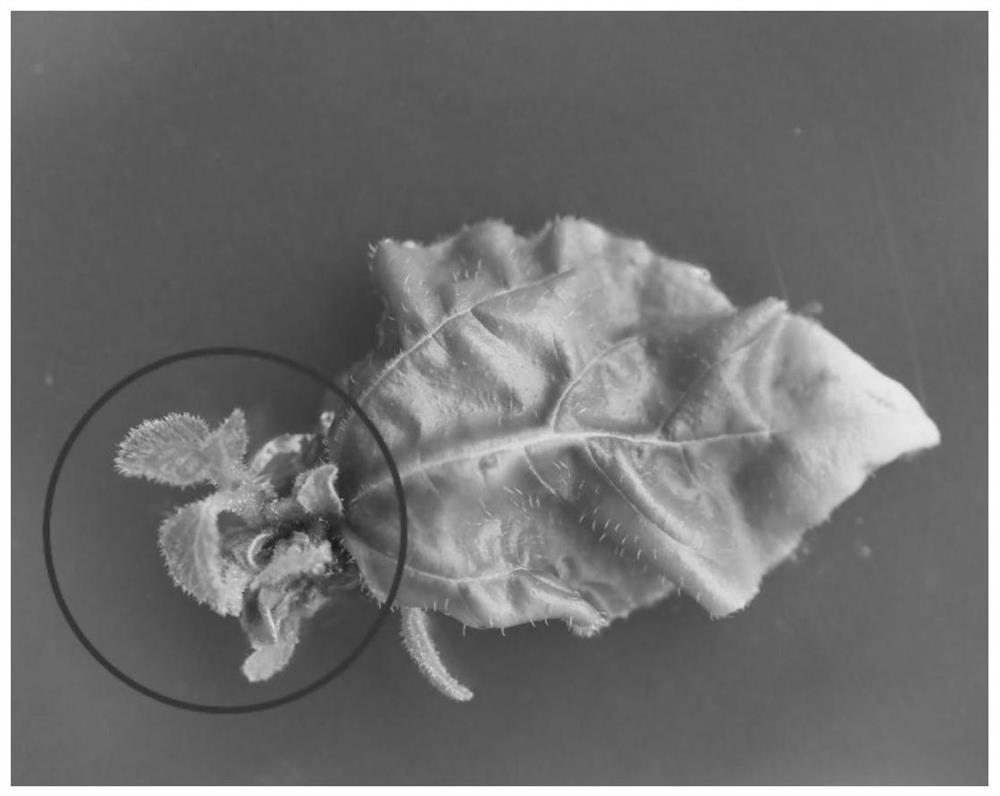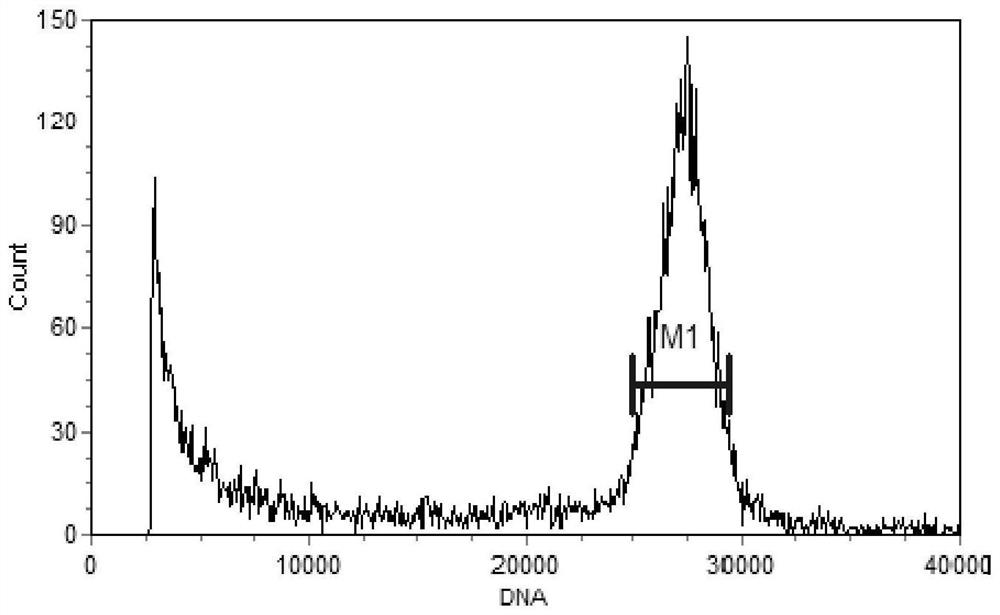Efficient induction method of clerodendrum japonicum polyploidy
A polyploid, high-efficiency technology, applied in horticultural methods, botanical equipment and methods, individual particle analysis, etc., can solve the problems of high chimera rate, simultaneous doubling, cumbersome separation operations, etc., and achieve high mutagenesis efficiency and regeneration. The effect of short cycle and easy operation
- Summary
- Abstract
- Description
- Claims
- Application Information
AI Technical Summary
Problems solved by technology
Method used
Image
Examples
Embodiment 1
[0028] A kind of high-efficiency induction method of polyploidy, comprising the following steps:
[0029] a. Pre-cultivation: Take the robust aseptic seedlings of Tungia tungii as the material, select the 3rd to 4th fully expanded leaves from top to bottom, cut the petiole with leaves as the induction material, inoculate it into the pretreatment medium, and carry out pre-cultivation . Described petiole with leaf: petiole is long 0.8-1cm and has 0.5-0.8cm 2 size of leaves. The pretreatment medium: each liter contains 2 mg of 6-BA, 0.05 mg of NAA, 30 g of sucrose and 9 g of agar, and the balance is MS medium, pH 5.8; culture conditions: temperature 23°C, dark culture for 5 days.
[0030] b. Polyploid induction: After the incision end of the petiole is slightly swollen, take out the whole leafy petiole and immerse it in an aqueous colchicine solution with a concentration of 20 mg / L to induce polyploidy. Induction culture conditions: temperature 25°C, culture in dark for 4h. T...
Embodiment 2
[0035] Except for the following differences, the method steps of this embodiment and embodiment 1 are the same; the difference is that the present embodiment uses the 5-6th sheet of aseptic seedlings of the tung tree to fully expand the leaves from top to bottom, and cut the leaves with leaves The petiole is the induction material, and the leafy petiole: the petiole is 1-1.5cm long and has a 2-3cm 2 size of leaves. The corresponding adventitious bud regeneration effects are shown in Table 1.
Embodiment 3
[0047] Except for the following differences, the method steps of this example and Example 1 are the same; the difference is that the concentration of NAA in the integrated medium for induction and differentiation used in step c is 1 mg / L; the corresponding callus induction rate and variable The bud regeneration effect is shown in Table 2.
PUM
 Login to View More
Login to View More Abstract
Description
Claims
Application Information
 Login to View More
Login to View More - R&D
- Intellectual Property
- Life Sciences
- Materials
- Tech Scout
- Unparalleled Data Quality
- Higher Quality Content
- 60% Fewer Hallucinations
Browse by: Latest US Patents, China's latest patents, Technical Efficacy Thesaurus, Application Domain, Technology Topic, Popular Technical Reports.
© 2025 PatSnap. All rights reserved.Legal|Privacy policy|Modern Slavery Act Transparency Statement|Sitemap|About US| Contact US: help@patsnap.com



